There are Plantains that look like tough bananas and there are Plantains that are low and leafy plants. No relation. Just two different groups with the same name. Plantains can be native or non-native. The one pictured above is native, the Dwarf Plantain. As a genus the plants are well-known. The leaves are edible raw when young. As they age they become more bitter and stringy. Cooking makes them palatable up to a point. Then they move into the astringent medical realm. They are used on bites, stings and to help puncture wounds heal. Seeds are edible once produced and are the source of the commercial dietary fiber, psyllium. When finely ground the seeds are sold under the brand name Metamucil. There are numerous species of Plantagos (Plantains) with at least four common locally, P. virginiana, P. major, P. lanceolata and P. rugelii the latter which strongly resembles P. major. They are all used the same way.
One problem beginning foragers have is confusing young Oakleaf Fleabane leaves for Dwarf Plantain leaves (they are both rosette-ish, low-growing green leaves, hairy with fibrous threads in the stem.) But the Dwarf Plantain is essentially a long skinny leave with a few teeth. The Oakleaf Fleabane is much fatter and has lobes and does resemble oak leave found on more northern species. You can read about the Plantains here.
Sometimes successful foraging involves identifying the food ahead of time. Around Valentines Day locally the fruit of the Silverthorn is ripe, give or take a few days either way or weeks if the distance is greater. Silverthorn’s blossoms are not extroverted. They are hidden in the shrubbery, odd-shaped and not showy. But over the next six to eight weeks they will turn in to bright red, elongated berries that are sweet and full of the antioxidant lycopene. The edible seeds have Omega 3 fatty acids. Silverthorn is a fairly easy landscaped (and escaped) shrub to find. Its leaves are usually moderate to dark green on top and waxy. The underside of the leaf is an unmistakable silver color with rusty freckles. You can read about them here.
Cut and paste foraging books (and websites) reveal themselves when they pass on poor information. Smilax berries is a common example. Smilaxes are “climbing shrubs.” We eat their growing tips when we find them, sometimes the young roots. Smilax are a favorite foraging food in spring. This time of year, though, many of them can be seen decked out with fruit. These berries can range for green to bronze to shiny black or shriveled like dark raisins. Many foraging books and sites say they berries are edible and that they “Indians” used them like chewing gum. Authors who say that have never tried the berries. From green to shiny black these berries are usually astringent (and that color change can take up to a year and a half to happen.) They are puckery every day of the way. There is virtually nothing gum-like about them at all that I am aware of. In fact they are not pleasant to eat until they look like raisins, and often not then. So yes, the berries are edible but are best when they resemble raisins on a vine. Usually the birds beat you to them. To read more about Smilax, go here.
And now a few words about Brazilian Pepper. It’s in profusion right now. The curse of the Native Plant Society, Brazilian Pepper it is highly regarded by bee keepers and makes outstanding honey. Some people use the red fruit for seasoning. This is a questionable practice. What that means is if the consumed berries don’t bother you they are apparently good to use for decades. For others it is like poison ivy: Some get sick after using them a few times and some get sick immediately on the first use. As one can see, individual response is across the board, from long-term use and no problems to first use and hospitalization. Botany Professor Julia Morton wrote a long monograph about the species in the journal of Economic Botany. Interestingly she warns people to not consume the berries but adds they are used to wine. This raises several possibilities. The offending chemical(s) might not be water or alcohol soluble. Or perhaps wine makers use the blossoms — like bees do — instead of the berries. I do not know. It’s a species whose use — or not — you have to work out on your own.
Foraging Classes: Except for hurricanes foraging classes usually are held as scheduled. We’re hungry when we are cold and wet so foraging classes are held when it is wet and when it is cold.
Saturday, January 7th, Blanchard Park, 10501 Jay Blanchard Trail, Orlando, FL 32817. 9 a.m. We meet by the tennis courts.
Sunday, January 8th, Bayshore Live Oak Park, 2200 East Lake Road, at Ganyard Road, Port Charlotte. 9 a.m.
Saturday January 14th, Dreher Park, 1200 Southern Blvd., West Palm Beach, 33405. 9 a.m. We meet north of the science center.
Sunday, January 15th, Wickham Park: 2500 Parkway Drive, Melbourne, FL 32935-2335. 9 a.m. We meet at the dog park inside the park.
To learn more about the classes, go here.
All of Green Deane’s videos are available for free on You Tube. They do have ads on them so every time you watch a Green Deane video I get a quarter of one cent. Four views, one cent. Not exactly a large money-maker but it helps pays for the newsletter. If you want to see the videos without ads and some in slightly better quality you can order the DVD set. It is nine DVDs with 15 videos on each. They make a good Christmas gift. Many people want their own copy of the videos or they have a slow service and its easier to order then to watch them on-line. They make a good gift for that forager you know. Individual DVDs can also be ordered. You can order them by clicking on the button on the top right of this page or you can go here. If that link is not working — there have been some site issues — you can use a donation link and email me your order and address.
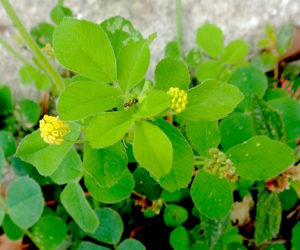
Do you know this plant that’s just starting it seasonal run? You would if you read the Green Deane Forum.
Want to identify a plant? Looking for a foraging reference? Do you have a UFO, an Unidentified Flowering Object you want identified? On the Green Deane Forum we chat about foraging all year. And it’s not just about warm-weather plants or just North American flora. Many nations around the world share common weeds so there’s a lot to talk about. There’s also more than weeds. The reference section has information for foraging around the world. There are also articles on food preservation, and forgotten skills from making bows to fermenting food. You can join the forum by clicking on the button on the upper right hand side of this page.
This is Newsletter 236.
If you would like to donate to Eat The Weeds please click here.

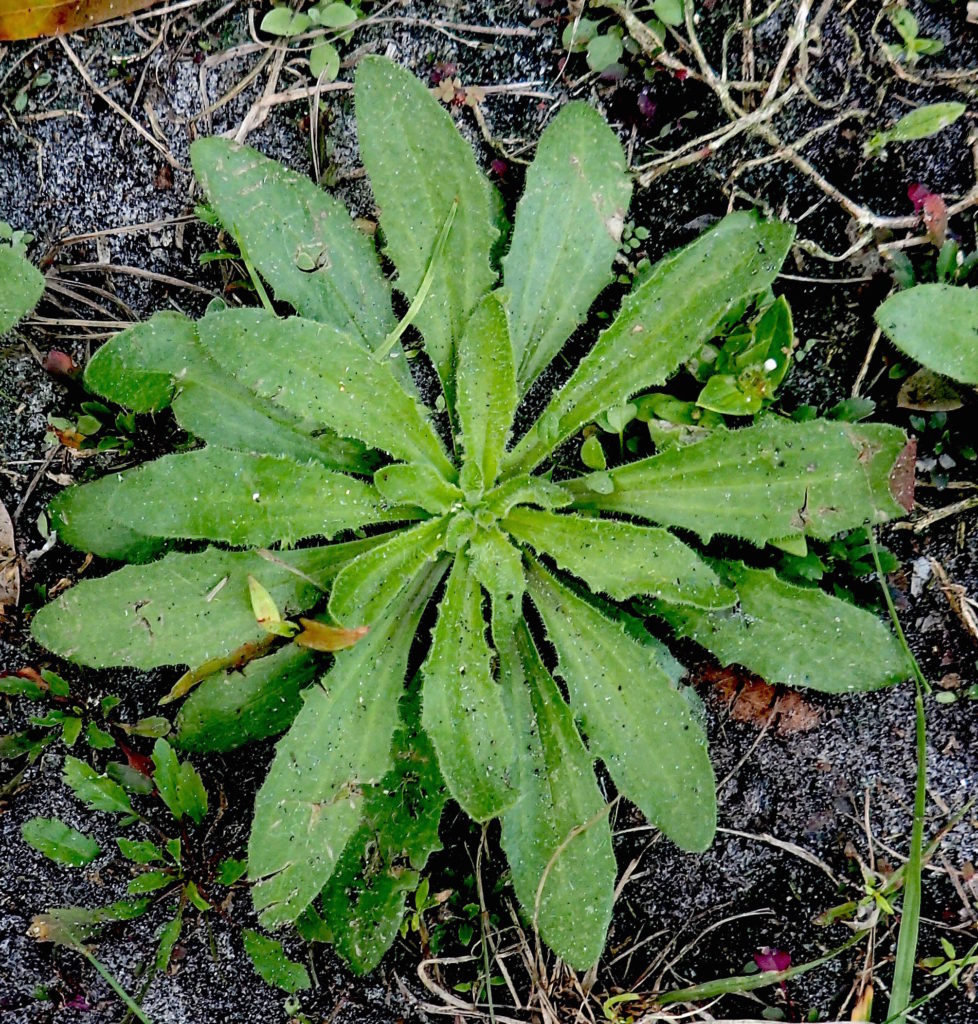
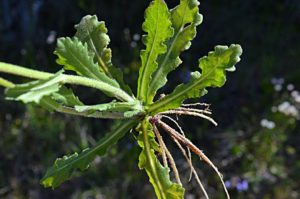
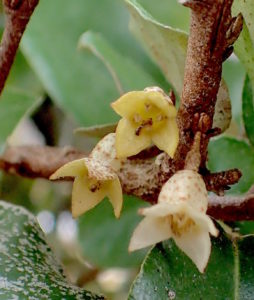
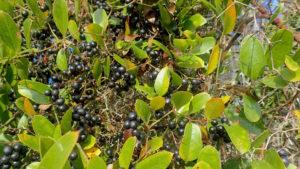

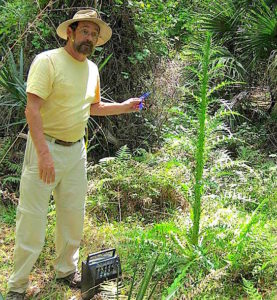


I notice so much more than I did before taking your Blanchard Park foraging class last year; thanks!
What is the low growing “weed” with the pale lilac/ almost white flowers that are everywhere? I see th on the shoulders of the roads, so I don’t want to park and scope them out up close. Are they edible? Native? Invasive?
Thanks… I really can’t place the plant in my mind… there are some small orchids that grow in patches on lawns that are lilac in color.
Do you think it might be the “Richardia”?
Yes, that’s it! I think the Grandiose one. I’m guessing it’s taking over road shoulders and other less tended areas because of the drought conditions we have had! Thanks!!
Possibly betony?
Not that tall or purple; but thanks anyway.
I know it’s had to do without a picture. Is there a way to post a picture with a question? I got one, and used it for comparison to UF ag pictures, once your readers put forth some options.
That is what the Green Deane Forum is for, there is a UFO page, Unidentified Flowering Objects. Or you can send the picture to GreenDeane@gmail.com
Hello,
Would you know any fellow forager in Europe (specifically Spain) who’s classes you could recommend?
Thank you so much
Francois Couplan lives in Switzerland but teachers throughout Europe.
About Plantago, a year ago I ‘ve looked for a certain commercial brand selling comined Plantago psyllium seeds and Plantago ovarata husks to help relief constipation. Having not found that in nutrition shops, I decided to use apple jam I made myself suitable to my case. It is known that pectin – an ingredient of apple – is also a source of soluble fibre. As an advice to those using psyllum or any other fibre for constipation purpose please google”Fiber Supplements – Which One You Need?” 1/ Select the suitable fibre as the brand name may contain different sources of fibre. 2/ Start slowly to let system to adjust.3/ Drink plenty of water to avoid blocking of digestive tract. Thanks dear Grean.
Also, I haven’t answered your photos because I don’t recognize those plants in that part of the world.